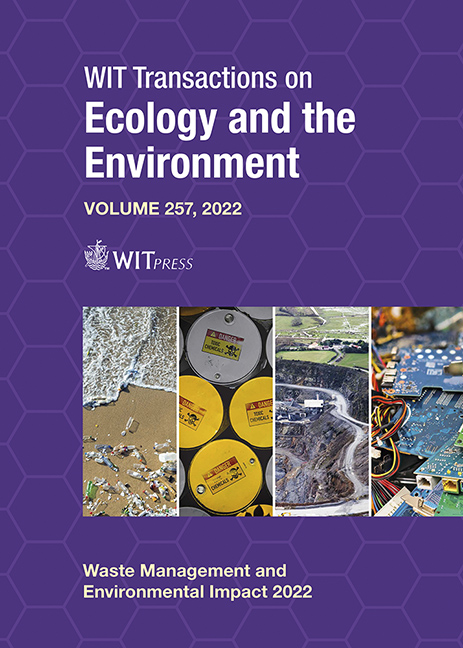HIERARCHICAL MONITORING OF WATER QUALITY: COORDINATING THE SPATIOTEMPORAL RESOLUTION OF MULTILAYER AND MULTISPECTRAL SENSORS TO CHARACTERIZE POLLUTION
Price
Free (open access)
Transaction
Volume
257
Pages
13
Page Range
3 - 15
Published
2022
Paper DOI
10.2495/WMEI220011
Copyright
Author(s)
GABRIELE MEDIO, VINCENZO SEVERINO, ROBERTA TETA, THEODORE ENDRENY, MASSIMILIANO LEGA
Abstract
Pollutant discharges into the environment can have significant adverse impacts on human health and biodiversity, and the detection of these discharges is hindered by the large spatial and temporal scales across which illicit activities also take place. To assist in environmental monitoring of receiving waters this research developed a hierarchical monitoring program to coordinate the spatiotemporal resolution of multilayer and multispectral sensors. The hierarchical monitoring refers to sensors carried by platforms located at different altitudes, operating at different spatial, temporal and spectral resolutions. The unique combinations of sensors generate information layers characterized by different relationships between several parameters of targeted area, making it possible to focus on specific aspects of the phenomena and to produce novel and complementary results. The proximal sensing instruments, such as drones which can operate closest to the target, often have the highest spatial and temporal resolution, and sufficient multispectral capacity, to provide a link or bridge between in-situ sampling and higher altitude remote sensing. The hierarchical monitoring study was conducted on the Domitia coast in southern Italy, where the Regi Lagni channel discharges. The Regi Lagni is contaminated by discharges from five wastewater plants, and receives illicit discharges in other sections, notably a wide wetland area. The multispectral and multilayer analysis evaluated the impacted area, using multispectral output of the proximal sensing acquisition drone system as a bridge layer to contextualize information coming from satellite acquisition. This operation was able to quantify the spatial impact of pollutant discharges through a classification process related to the anomalies of the multispectral response of coastal waters, using algorithms based on spatial variation of pollutant concentrations. This study, extended over statistically significant time intervals, can provide useful information for the decision-making/technical processes related to the classification and quality control of coastal waters.
Keywords
environmental impact assessment, pollution, coastal waters, multispectral analysis, multilayer analysis, proximal sensing, remote sensing, hierarchical monitoring




